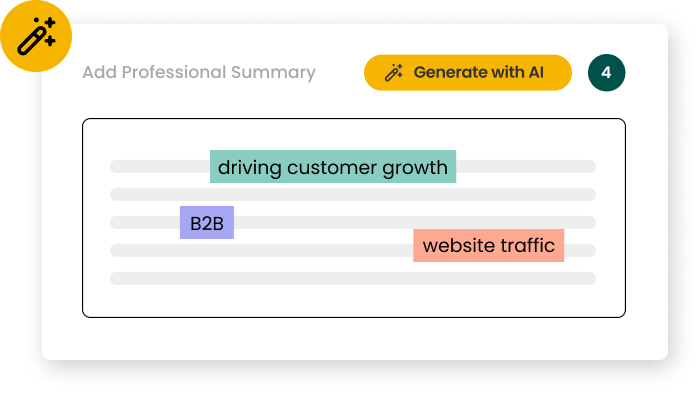How long should I make my Sustainability Engineer resume?
For a Sustainability Engineer resume in 2025, aim for one to two pages. This length allows you to showcase your relevant skills, experience, and achievements without overwhelming recruiters. Focus on recent and impactful projects related to sustainability, energy efficiency, and environmental compliance. Use concise bullet points to highlight key accomplishments and quantify results where possible, demonstrating your ability to drive sustainable solutions and improve environmental performance.
A hybrid format works best for Sustainability Engineer resumes, combining chronological work history with a skills-based approach. This format allows you to showcase both your career progression and your specific sustainability expertise. Include sections for summary, skills, work experience, education, and certifications. Use a clean, professional layout with sustainability-themed design elements. Emphasize keywords related to sustainable technologies, environmental regulations, and green building practices to optimize for applicant tracking systems (ATS).
What certifications should I include on my Sustainability Engineer resume?
Key certifications for Sustainability Engineers in 2025 include LEED AP (Leadership in Energy and Environmental Design Accredited Professional), CEM (Certified Energy Manager), and WELL AP (WELL Accredited Professional). These certifications demonstrate your expertise in sustainable design, energy management, and occupant health. Additionally, consider industry-specific certifications like ISO 14001 or GRI Sustainability Reporting. List certifications prominently in a dedicated section, including the certification name, issuing organization, and date of acquisition or renewal.
What are the most common mistakes to avoid on a Sustainability Engineer resume?
Common mistakes on Sustainability Engineer resumes include focusing too heavily on general engineering skills rather than sustainability-specific expertise, failing to quantify environmental impact and cost savings, and neglecting to showcase knowledge of current sustainability regulations and technologies. To avoid these pitfalls, emphasize your contributions to sustainable projects, provide specific metrics on energy savings or waste reduction, and highlight your familiarity with emerging green technologies and environmental policies. Always tailor your resume to the specific job description, aligning your experience with the employer's sustainability goals.
